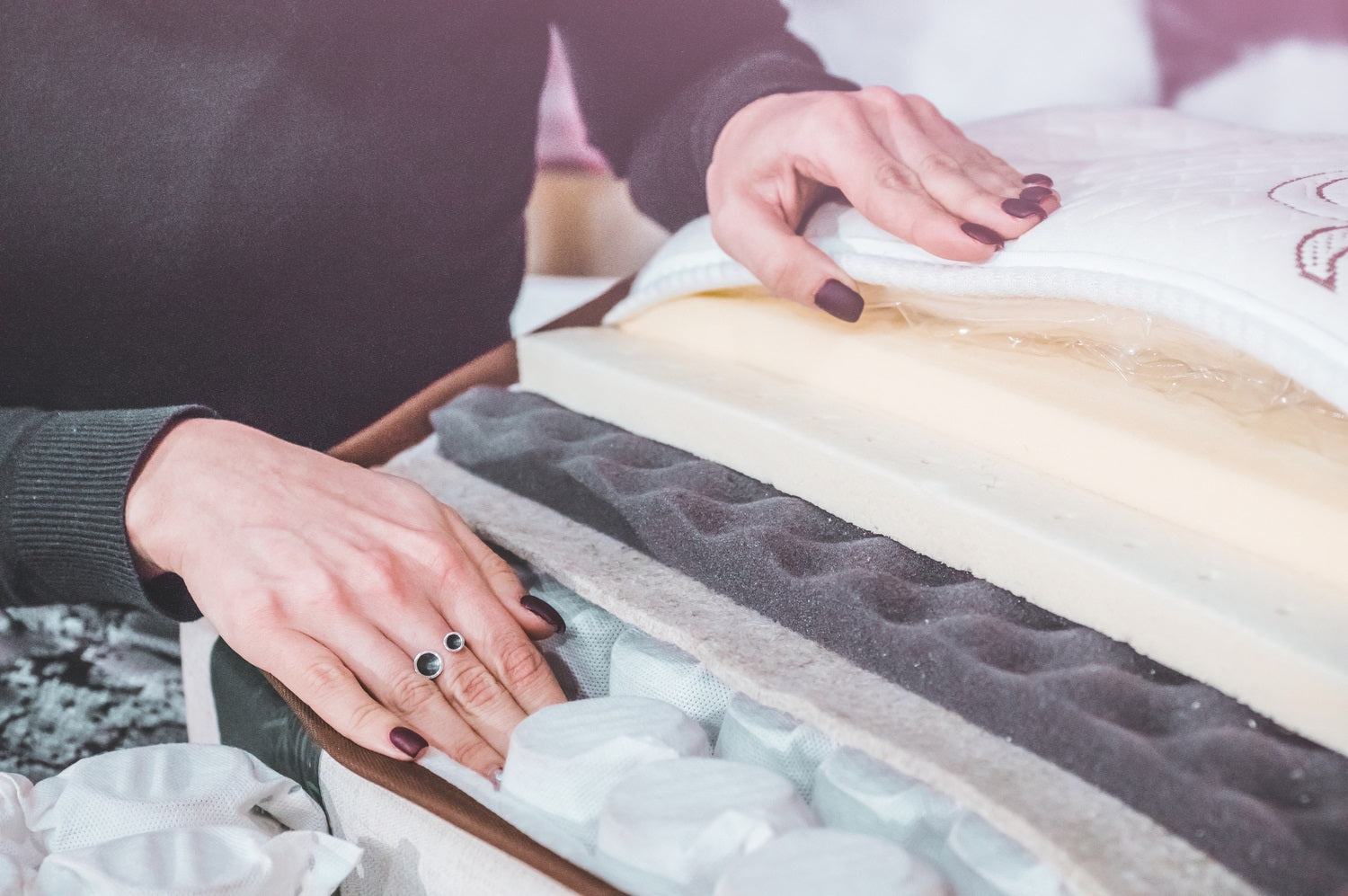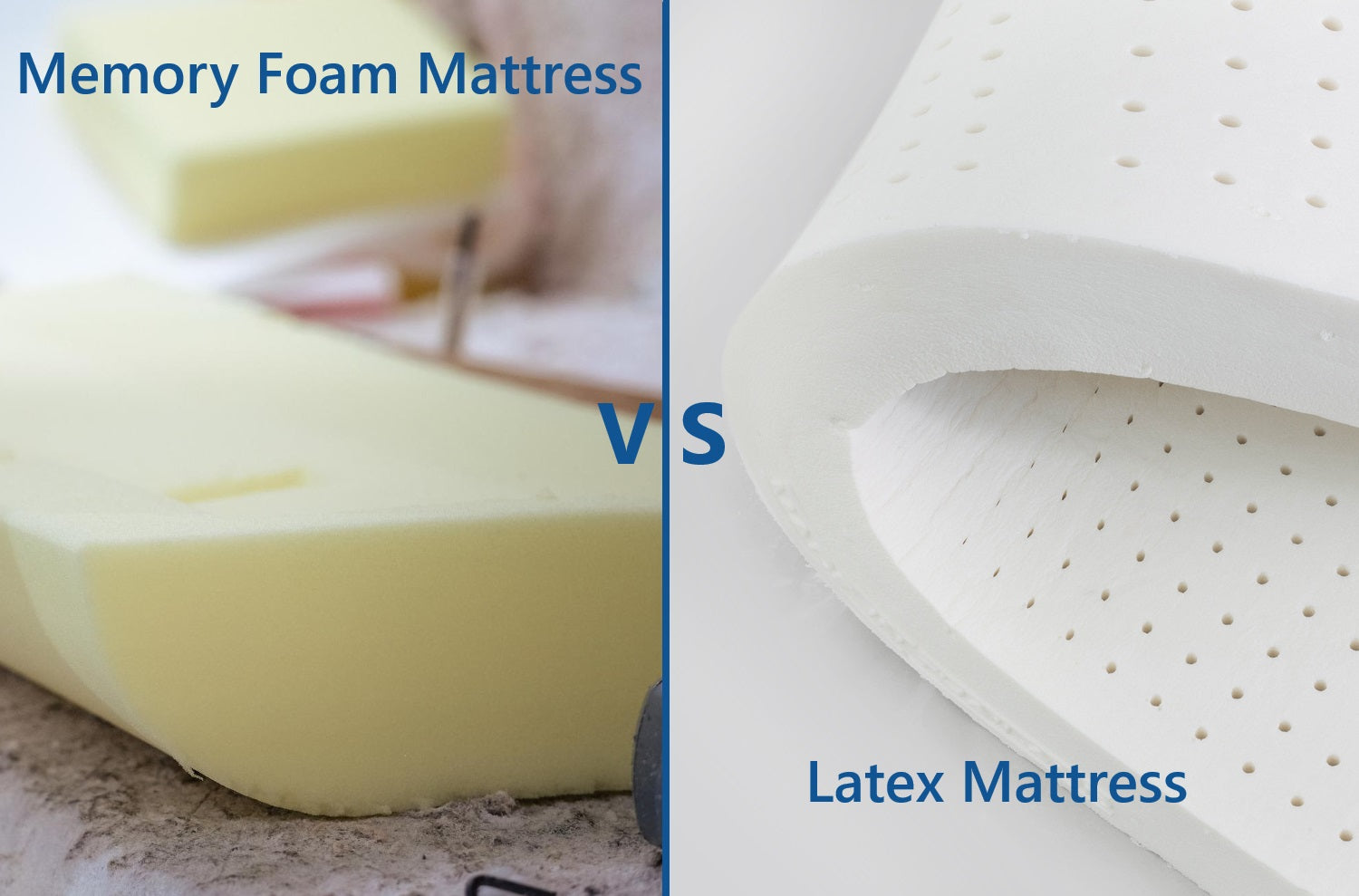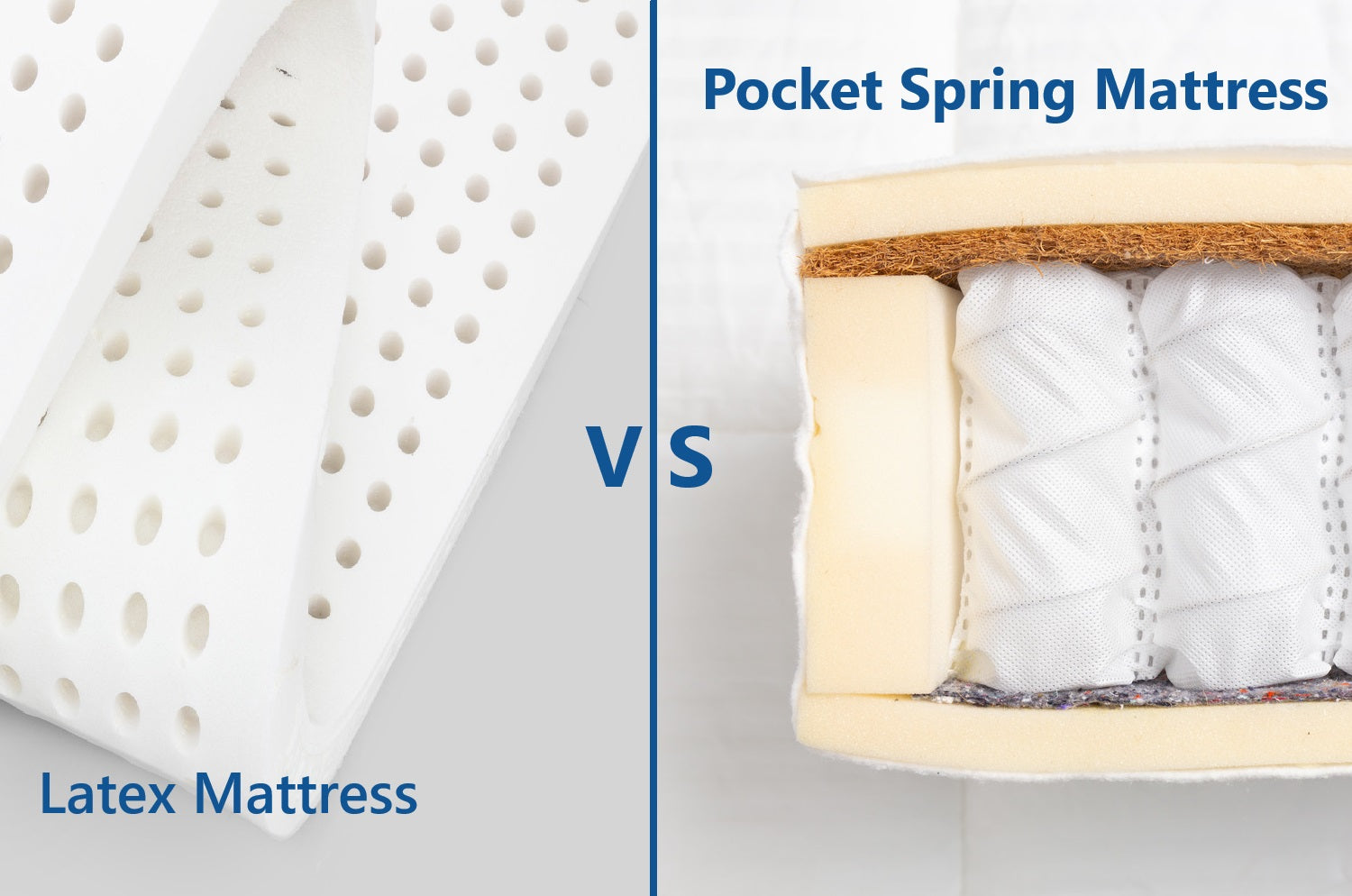If you've ever felt confused by all the options out there, you're in the right place! In this post, we'll break down the key differences between hybrid and memory foam mattresses, especially as they relate to the unique climate and lifestyle in Cyprus.
Are you drawn to the plush, contouring comfort of memory foam, or do you prefer the balanced support and breathability of a hybrid model? We'll help you understand the pros and cons of each type so you can find the perfect fit for your sleep needs.
Read on to discover which mattress style can transform your sleep experience in Cyprus, and get expert tips on making the best choice for your home and health!
What is a hybrid mattress?
A hybrid mattress is a type of mattress that combines two key elements: a supportive coil system like you’d find in a traditional innerspring mattress, and layers of foam on top for extra comfort. This design offers the best of both worlds—responsive support from the coils and pressure-relieving softness from the foam.
The coil base helps keep the mattress firm and allows air to flow, which enables you to stay cool at night, especially important in warm places like Cyprus. Hybrid mattresses also have strong edge support, so you can use the entire surface without feeling like you’ll roll off.
The foam layers contour to your body, providing targeted support and comfort. If you want a mattress that strikes a balance between softness and strength, a hybrid is a great choice. It works well for various sleeping positions and is particularly beneficial for individuals who tend to move around during the night, helping most sleepers stay comfortable throughout the night.
What is a memory foam mattress?
A memory foam mattress is crafted from viscoelastic foam, a material specially engineered to contour to the unique shape of your body. This design ensures targeted support in key areas, such as your hips and shoulders, making it especially popular among side sleepers.
The foam’s ability to distribute weight evenly helps relieve pressure points, creating a sensation that many describe as the mattress “hugging” you. While older memory foam mattresses were sometimes criticised for retaining heat, modern versions often incorporate gel infusions or advanced cooling technologies to help regulate temperature.
Memory foam is also known for its excellent motion isolation, which means you’re less likely to be disturbed if your partner moves during the night. With no springs inside, these mattresses are virtually silent—an added bonus for light sleepers. Thanks to their adaptability and range of features, memory foam mattresses suit a wide variety of sleeping preferences and needs.
What are the Differences Between Hybrid and Memory Foam Mattresses?
Hybrid mattresses use foam layers and a coil support core. This mix gives a bouncy feel. Memory foam beds, on the other hand, focus on providing more profound pressure relief and minimising motion transfer when someone moves. Hybrids often offer good temperature regulation and strong edge support. They can be beneficial if you tend to get hot at night or if you prefer to sit on the edge of the bed.
Memory foam beds are softer and better at providing pressure relief. They also make less noise. This makes foam beds suitable for side sleepers or couples who want a quieter room. When you choose, consider your sleep style, the firmness you prefer for your bed, and what you can afford within your budget.
1. Material Differences Between Hybrid and Memory Foam Mattresses
Choosing the right mattress starts with understanding what's inside. The materials used in hybrid and memory foam mattresses play a significant role in how each type feels, supports your body, and regulates temperature.
Here's a quick look at the key material differences between these two popular mattress styles.
|
Mattress Type |
Main Materials Used |
Support Core |
Comfort Layers |
|---|---|---|---|
|
Memory Foam |
Primarily made of memory foam (viscoelastic polyurethane foam) and high-density polyfoam. |
High-density polyfoam |
Memory foam, sometimes with cooling gels or open-cell designs for breathability. |
|
Hybrid |
Combination of foam (memory foam, latex, polyfoam) and a coil system (individually wrapped springs). |
Innerspring coils |
Foam (memory foam, latex, polyfoam), sometimes microcoils, fiber, or pillow tops. |
Memory foam mattresses are made entirely of foam layers, with a focus on contouring and motion isolation. Hybrid mattresses combine foam comfort layers with a coil support core, resulting in a mattress that strikes a balance between pressure relief, support, and breathability.
2. Support Differences Between Hybrid and Memory Foam Mattresses
Support is one of the most important factors to consider when choosing between a hybrid and a memory foam mattress. Each type offers a distinct support system that affects how your body feels during sleep, spinal alignment, and overall comfort.
Memory Foam Mattresses:
-
Use a high-density polyfoam core for support, topped with memory foam layers that contour closely to your body.
-
Provide excellent pressure relief by evenly distributing weight and reducing pressure points, making them ideal for people with joint pain or those who prefer a "hugging" sensation.
-
Promote proper spinal alignment by conforming to the body's natural curves, which can help alleviate back pain and discomfort.
-
Offer superior motion isolation, so movements from a partner are barely felt.
-
However, memory foam mattresses generally lack reinforced edge support, which means the edges may compress more when you sit or lie near them.
Hybrid Mattresses:
-
Feature a support core made of individually wrapped innerspring coils combined with layers of foam, latex, or other materials on top.
-
Deliver a balanced feel: the coils provide structured, responsive support, helping to keep the spine aligned, while the foam layers cushion pressure points.
-
Adapt well to all sleeping positions, offering both the contouring of foam and the bounce of springs.
-
Typically, it includes reinforced edge support, making it easier to sit or sleep near the edge without sagging.
-
The coil system also enhances airflow, which aids in temperature regulation and prevents the mattress from feeling too warm.
Memory foam mattresses excel at providing pressure relief and motion isolation. In contrast, hybrid mattresses offer a balance of support, bounce, and edge stability—making them especially suitable for individuals who desire both comfort and strong, responsive support.
3. Durability Differences Between Hybrid and Memory Foam Mattresses
When comparing durability, hybrid and memory foam mattresses show notable differences due to their construction and materials.
Memory foam mattresses typically last between 7 to 10 years with proper care. However, high-quality models can sometimes reach up to 15 years. However, memory foam is prone to developing permanent indentations and sagging over time, especially if the foam is lower density or the mattress is not rotated regularly. Moisture and heat retention can also accelerate wear in memory foam, potentially reducing its lifespan if not appropriately managed.
Hybrid mattresses generally offer better durability, with an average lifespan of 8 to 12 years or more, depending on the quality of materials and maintenance. The inclusion of a sturdy coil system provides structural support that resists sagging, helping the mattress maintain its shape longer than all foam options. High-quality hybrids also feature reinforced edge support, which extends usable surface area and further prevents premature breakdown.
Hybrid mattresses tend to be more durable than memory foam mattresses due to their robust coil support systems and resistance to sagging, making them a better long-term investment for most sleepers.
4. Temperature Regulation Differences Between Hybrid and Memory Foam Mattresses
Temperature regulation is a crucial difference between hybrid and memory foam mattresses, especially for sleepers in warmer climates or those prone to overheating at night.
Memory foam mattresses tend to retain more heat due to their dense structure, which restricts airflow and traps body heat near the surface. While modern memory foam models often incorporate cooling technologies—such as gel-infused foam, open-cell construction, or breathable covers—these features may only partially address the issue. Some sleepers may still experience warmth, particularly with high-density foams.
Hybrid mattresses generally offer superior temperature regulation compared to all-foam models. The key advantage comes from their innerspring coil base, which allows for increased airflow throughout the mattress, helping dissipate heat and maintain a cooler sleep environment. Many hybrids also use less memory foam in the comfort layers, further reducing heat retention. Some hybrid models feature additional cooling elements, such as perforated foams or specialised cooling covers, to enhance breathability further.
Hybrid mattresses are typically the better choice for hot sleepers or those living in warm climates, thanks to their enhanced airflow and cooler sleep surface. In contrast, memory foam mattresses may require specific cooling technologies to achieve the same level of temperature regulation.
5. Noise Differences Between Hybrid and Memory Foam Mattresses
When it comes to noise, hybrid and memory foam mattresses behave quite differently due to their distinct internal constructions.
Memory foam mattresses are virtually silent because they contain no springs or moving parts. Even after years of use, memory foam maintains its quiet performance, making it an excellent choice for light sleepers or couples who are easily disturbed by sound. The dense foam absorbs movement and sound, so you won't hear squeaks or creaks when shifting positions or getting in and out of bed.
Hybrid mattresses, on the other hand, include a core of innerspring coils beneath their foam layers. While many modern hybrids use pocketed coils designed to minimise noise, some level of sound is still possible, especially as the mattress ages and the coils begin to wear down. This can result in occasional squeaks or creaks when you move or change positions. Although the noise is typically less than that of traditional innerspring mattresses, it may still be noticeable for sensitive sleepers.
Memory foam mattresses are entirely silent. In contrast, hybrid mattresses may develop some noise over time due to their coil systems. If a quiet sleep environment is a top priority, memory foam is the superior choice.
What are the overall pros and cons when comparing Hybrid and Memory Foam Mattresses?
When weighing hybrid and memory foam mattresses, both offer distinct advantages and drawbacks that can impact your sleep quality, comfort, and budget.
Here's a clear overview of the main pros and cons for each type:
|
Feature |
Hybrid Mattress |
Memory Foam Mattress |
|---|---|---|
|
Pros |
- Balanced comfort & support: Combines foam’s contouring with coil support for most sleep styles. |
- Pressure relief: Excellent body contouring, relieves pressure points and supports spinal alignment. |
|
Cons |
- Higher price: Usually more expensive due to complex construction and materials. |
- Heat retention: Can trap heat, though cooling models are available. |
Your choice should depend on your sleep preferences, body type, and budget.



